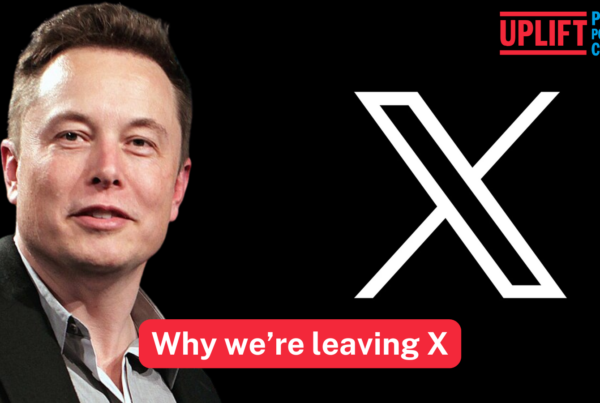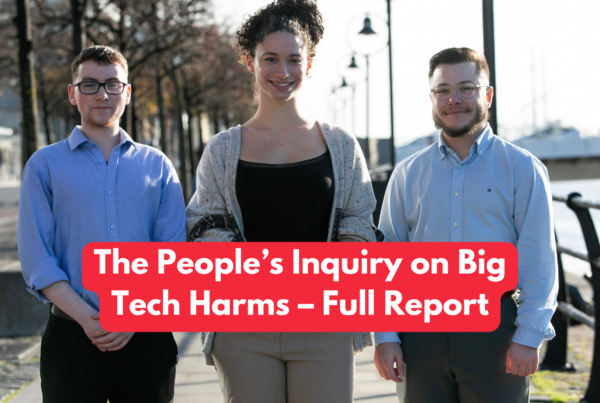
If you suspect something you’re reading on the internet, social media or on a messaging app such as WhatsApp is digital disinformation (fake news) ie. not true, you can check it at https://www.thejournal.ie/factcheck/news/ or https://fullfact.org/
Since the start of the COVID-19 pandemic, unfounded conspiracy theories linking the virus to 5G have proliferated throughout the internet. These ‘claims’ are building on the previous spread of disinformation, despite the lack of evidence, linking 5G to a range of health issues. [1]
The spread of such disinformation can actually cause real harm, for example, when mobile networks’ tower masts were set alight in the UK and Ireland earlier this month by people who have fallen for the fake COVID-19/5G link. At a time when people are stuck at home and unusually reliant on mobile networks and broadband to connect to the outside world and when mobile connectivity is crucial to the emergency services and hospitals, the actions of a small group of scared people risked causing real harm – unlike the tower masts they are burning down. [2]
Unfounded claims about a supposed link between 5G and Covid-19 began circulating on the fringes of the internet a few weeks ago, when far-right conspiracy theorists perpetuated the hoax that global elites were using 5G to spread the virus. Unsophisticated algorithms amplified those voices and ushered unsubstantiated theories into the mainstream.
There’s no evidence to support the theory that 5G networks cause Covid-19 or contribute to its spread. But still, it refuses to die.
5G networks began rolling out in cities and countries in 2018, but were more widely adopted in 2019 – the same year that Wuhan, China, saw the world’s first coronavirus outbreak.
Another thing those areas have in common? They’re metropolitan areas: large population centers that are more vulnerable to the spread of the coronavirus and are more likely to adopt 5G networks earlier.
Conspiracy theorists were quick to link the two, ignoring the ever-relevant adage: Correlation does not imply causation. There are many parts of the world experiencing COVID-19 breakouts which are nowhere near installing 5G technology.
Many of the 5G/COVID-19 conspiracy theories are linked to groups that have long claimed that wireless airwaves cause cancer, though there is no credible evidence to support this.
Research shows that radiofrequency (RF) waves given off by cell phones do not have enough energy to damage DNA directly or heat body tissues – their energy levels are lower even than technologies such as microwave ovens and televisions.
In order to address concerns about 5G from members of our community, last April we asked Uplift members to chip in to fund an independent report into 5G in Ireland which we published on the Uplift blog – here is the report again:
Read the Full ReportNOTES:
[2] https://www.thejournal.ie/5g-masts-destruction-coronavirus-hoax-5074056-Apr2020/
This is a summary of the opinion article written by William Hederman who was commissioned by Uplift in the Spring of 2019 to investigate some of the concerns about 5G.
Fifth-generation — or 5G — mobile phone technology is on the way, with the promise of a brave new world of ultra-high-speed internet access, smart cities and an ‘Internet of Things’. But search for 5G online and you’ll find frightening warnings about dangers to human health.
Here in Ireland, the mainstream media has mostly ignored the issue, and the story has gone viral on social media. There are about 20 Irish anti-5G groups on Facebook, some with several thousand followers and a frenzy of stories about how the technology will give us cancer. Some of the material on these pages is informed by warnings from credible scientific sources, but there is also masses of misinformation and scaremongering, sometimes woven together with climate denial and conspiracy theories.
The campaigning organisation Uplift has been contacted by so many people concerned about 5G — mainly from among its 200,000-strong membership — that it commissioned me to investigate the issue, to separate myth from fact, and scaremongering from science.
Establishing a couple of basic facts was straightforward. The substantive question of whether 5G is a health threat is — not surprisingly — much harder to answer definitively. As the technology is new and largely untested, the scientific debate has focused on existing mobile phone technology and possible links to cancer. Thousands of studies have been conducted over several decades, but scientists disagree as to what this body of research shows.
In 2011 the International Agency for Research on Cancer (IARC), part of the World Health Organisation, classified the radiation from mobile phones as “possibly carcinogenic” to humans. This is often cited, but it’s worth noting that this is a fairly low level of risk – “possible carcinogen”, which is IARC’s group 2b, also includes coffee, aloe vera, pickled vegetables and working as a dry cleaner.
Kevin McConway, professor of applied statistics at the UK’s Open University, and a specialist in medical sciences, summed up the view of many scientists when he was quoted recently as saying the jury is still out on the link between mobile phones and cancer. “My tentative conclusion from recently published research studies is that nothing has really changed since 2011… What we still have is rather weak evidence that there might be an association for long-term or heavy users.”
While fears about 5G are partly a revival of this older, unresolved debate, it is true 5G will be very different from what came before. There will be a huge number of base stations, but being so close together means they can transmit at a much lower power (i.e. wattage). Dr Conor Brennan of DCU’s School of Electronic Engineering likened this to “whispering from nearby, whereas early generation networks were like shouting from a distance”.
The other area of concern is the higher frequencies being talked about for 5G. In fact, the frequencies licensed by ComReg for 5G in Ireland are around 3.6 GHz (gigahertz), which “have been in use in Ireland for more than a decade for rural wireless broadband,” says Barry O’Donovan, an engineer working in this sector. Ronan Farrell, professor of electronic engineering at Maynooth University, says the higher frequency bands that people worry about — around 24–27 GHz and 71–86 GHz — have not yet been released for 5G usage in Ireland. “Apart from a few trials, I suspect any large-scale deployments [of those bands] in Ireland are at least five years away, if not more.”
The science is not definitive on mobile phones and cancer, but limiting your usage is probably wise. There is, as yet, no strong evidence that 5G will introduce any added risk.
Read the Full Report


